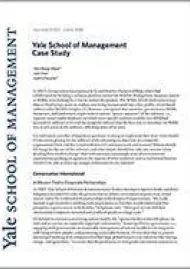Ford Motor Company

This case is about two crucial developments in capitalist societies: 1) the coming of mass affluence, and 2) the rise of the joint stock corporation. More specifically, it is about some of the ways the two developments are connected to one another. It uses the early history of the Ford Motor Company (FMC) from 1903 to 1919 as an example of the joint stock corporation and as a driver of mass affluence. Ford became a driver of mass affluence in two ways: A) by producing a cheaper and cheaper car in unprecedented quantities, and B) by paying its workforce wages roughly twice as high as had previously been paid in American industry. One could also say that mass affluence drove the success of FMC, by providing widespread demand for automobiles, a product that had previously been available only to the top 5% or 10% of U.S. households. One additional issue emerges in the case: the alleged requirement of U.S. law that the corporation seek to maximize shareholder wealth in preference to all other goals. As we will see from a brief look at the case of Dodge v. Ford, the law is more complex than this claim admits.